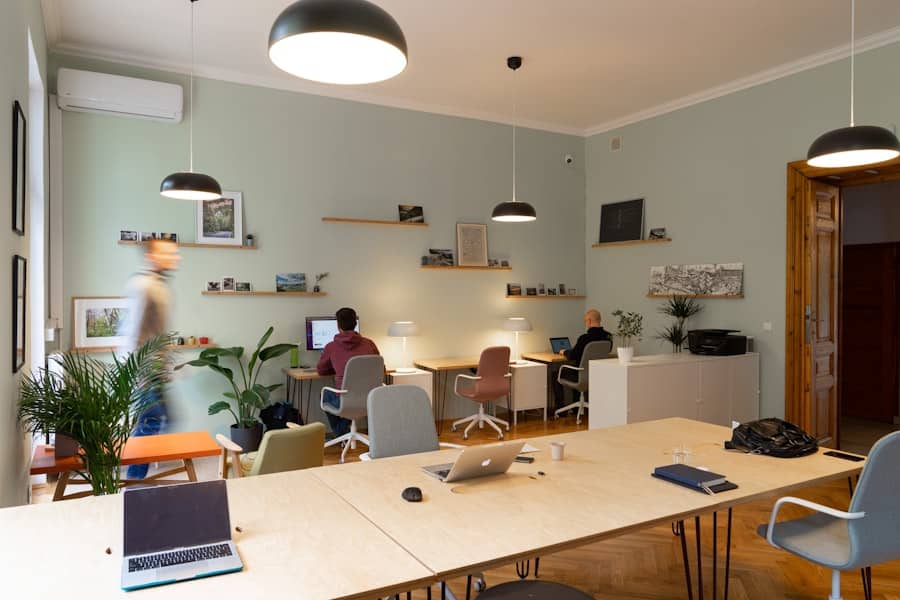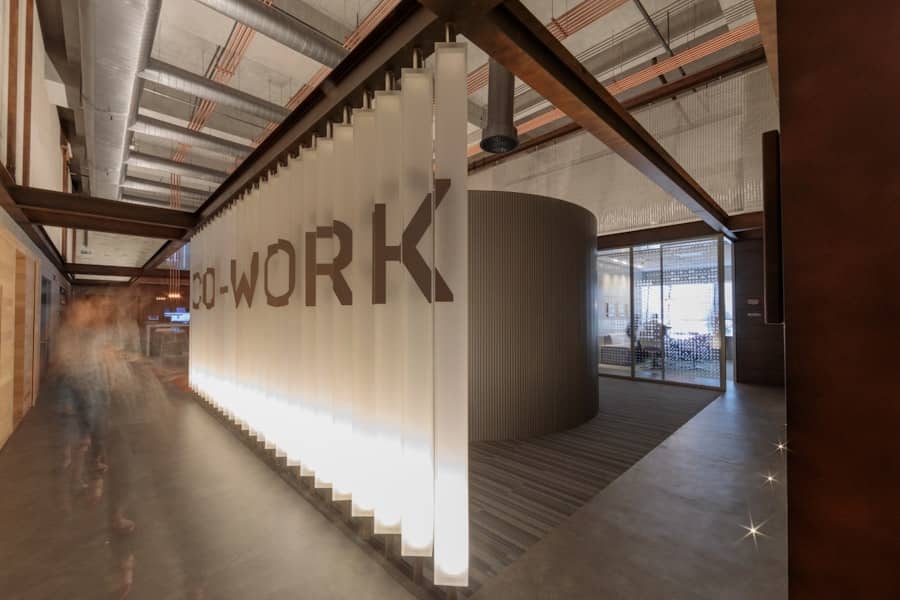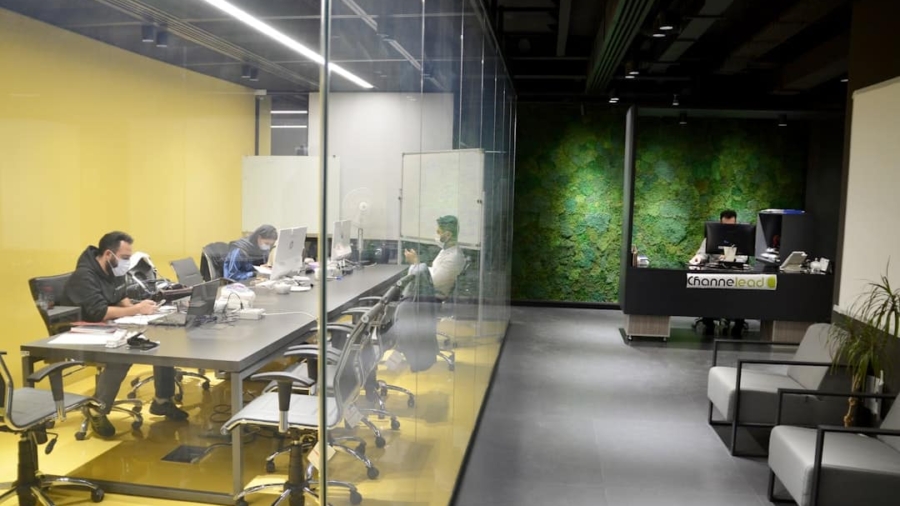The advent of virtual reality (VR) technology has ushered in a new era of possibilities for various sectors, including the realm of workspaces. VR co-working spaces represent a significant shift from traditional office environments, offering a digital alternative that transcends geographical limitations. These virtual environments allow individuals and teams to collaborate, innovate, and engage in a shared workspace without the constraints of physical presence.
As remote work becomes increasingly prevalent, the need for effective and immersive collaboration tools has never been more critical. VR co-working spaces are emerging as a solution that not only addresses these needs but also enhances the overall work experience. In essence, VR co-working spaces create a simulated environment where users can interact with one another and their surroundings in real-time.
By donning VR headsets, participants can enter a 3D workspace that mimics the feel of a physical office while incorporating unique features that enhance productivity and creativity.
As organizations and freelancers alike explore these virtual landscapes, the potential for VR to redefine the future of work becomes increasingly apparent.
Key Takeaways
- VR co-working spaces offer a virtual environment for remote workers to collaborate and communicate in a shared workspace.
- Advantages of VR co-working spaces include increased flexibility, reduced commuting time, and access to a global talent pool.
- VR co-working spaces are cost-effective and accessible, eliminating the need for physical office space and allowing for remote participation from anywhere in the world.
- Collaboration and communication in VR are enhanced through features such as 3D spatial audio and virtual whiteboards, fostering a sense of presence and interaction.
- Customization and flexibility in VR co-working spaces allow users to personalize their virtual workspace and adapt it to their specific needs and preferences.
- Potential challenges and limitations of VR co-working spaces include technological barriers, potential for isolation, and the need for reliable internet connectivity.
- The future outlook for VR co-working spaces is promising, with advancements in VR technology and increasing demand for remote work solutions driving their continued development and adoption.
- In conclusion, VR has the potential to transform workspaces by offering a new way for remote workers to connect, collaborate, and thrive in a virtual environment.
Advantages of VR Co-Working Spaces
One of the most compelling advantages of VR co-working spaces is the immersive experience they provide. Unlike standard video conferencing tools that can feel flat and disengaging, VR environments allow users to interact with one another in a more lifelike manner. Participants can see avatars representing their colleagues, engage in discussions, and even share digital whiteboards or presentations as if they were physically present in the same room.
This level of immersion can significantly enhance communication and foster a sense of belonging among team members who may be scattered across different locations. Moreover, VR co-working spaces can facilitate a more dynamic approach to collaboration. For instance, teams can brainstorm ideas in real-time using virtual tools that allow for interactive sketching or modeling.
This capability not only makes meetings more engaging but also encourages creativity by providing an environment where ideas can be visualized and manipulated instantly. The ability to collaborate in such an interactive manner can lead to more innovative solutions and a stronger team dynamic, ultimately benefiting the organization as a whole.
Cost-Effectiveness and Accessibility

Cost-effectiveness is another significant advantage of VR co-working spaces. Traditional office spaces often come with substantial overhead costs, including rent, utilities, and maintenance. In contrast, virtual co-working environments eliminate many of these expenses.
Organizations can save on physical office space while still providing employees with a collaborative environment that promotes productivity. Additionally, companies can reduce travel costs associated with bringing remote team members together for meetings or workshops, as VR allows for seamless interaction regardless of location. Accessibility is also a key factor in the appeal of VR co-working spaces.
Individuals with disabilities or those living in remote areas may face challenges when it comes to accessing traditional office environments. VR technology can bridge this gap by providing an inclusive workspace that anyone with an internet connection can access. Furthermore, as VR technology continues to evolve, it is becoming increasingly affordable and user-friendly, making it accessible to a broader audience.
This democratization of workspace access can empower individuals who may have previously been excluded from collaborative opportunities due to physical or geographical barriers.
Collaboration and Communication in VR
Effective collaboration and communication are at the heart of any successful team dynamic, and VR co-working spaces excel in this regard. The immersive nature of these environments allows for more nuanced interactions than traditional communication methods. For example, non-verbal cues such as body language and facial expressions can be conveyed through avatars, enhancing understanding and reducing the likelihood of miscommunication.
This aspect is particularly important in diverse teams where cultural differences may influence communication styles. Additionally, VR co-working spaces often come equipped with tools designed specifically for collaboration. Features such as virtual meeting rooms, shared digital whiteboards, and interactive 3D models enable teams to work together on projects in real-time, regardless of their physical locations.
This level of interactivity fosters a sense of teamwork that can be challenging to achieve through standard video calls or emails. By creating an environment where ideas can be exchanged freely and collaboratively, VR co-working spaces can lead to more effective problem-solving and innovation.
Customization and Flexibility
One of the standout features of VR co-working spaces is their inherent customization and flexibility. Unlike traditional office environments that are often constrained by physical layouts and design choices, virtual spaces can be tailored to meet the specific needs of users. Organizations can create unique virtual offices that reflect their brand identity or cater to the preferences of their teams.
Flexibility is another critical aspect of VR co-working spaces. Teams can easily adapt their virtual environments to accommodate different types of work activities, whether it be brainstorming sessions, formal presentations, or casual catch-ups.
The ability to switch between various settings—such as a conference room for meetings or a lounge area for informal discussions—ensures that teams have the right environment for every task at hand. This adaptability not only enhances productivity but also contributes to employee satisfaction by allowing individuals to choose how they want to work.
Potential Challenges and Limitations

Despite the numerous advantages offered by VR co-working spaces, there are also potential challenges and limitations that must be considered. One significant concern is the technological barrier that may prevent some individuals from fully engaging with these environments. While VR technology has become more accessible over time, not everyone may have access to high-quality headsets or reliable internet connections necessary for an optimal experience.
This disparity could lead to unequal participation among team members, undermining the collaborative spirit that VR aims to foster. Another challenge lies in the potential for virtual fatigue. Just as prolonged use of traditional screens can lead to eye strain and fatigue, extended periods spent in VR environments may result in discomfort or disorientation for some users.
Organizations must be mindful of these issues and implement strategies to mitigate them, such as encouraging regular breaks or providing guidelines on how long employees should spend in virtual settings. Balancing the benefits of immersive experiences with the need for user comfort will be crucial as VR co-working spaces continue to evolve.
Future Outlook for VR Co-Working Spaces
The future outlook for VR co-working spaces appears promising as technology continues to advance at an unprecedented pace. Innovations in hardware and software are likely to enhance the user experience further, making virtual environments even more realistic and engaging. For instance, improvements in haptic feedback technology could allow users to feel sensations within the virtual space, adding another layer of immersion that could revolutionize how we interact in these environments.
Moreover, as organizations increasingly recognize the value of flexible work arrangements, the demand for VR co-working spaces is expected to grow. Companies may begin to adopt hybrid models that combine traditional office setups with virtual environments, allowing employees to choose how they want to work based on their preferences and needs. This shift could lead to a more inclusive workplace culture where collaboration transcends physical boundaries, ultimately fostering innovation and creativity across diverse teams.
The Potential for VR to Transform Workspaces
The potential for VR technology to transform workspaces is immense, particularly through the lens of co-working environments. By offering immersive experiences that enhance collaboration, communication, customization, and accessibility, VR co-working spaces are poised to redefine how we approach work in an increasingly digital world. While challenges remain—such as technological barriers and user comfort—ongoing advancements in VR technology promise to address these issues over time.
As organizations continue to adapt to changing work dynamics, embracing innovative solutions like VR co-working spaces could provide a competitive edge in attracting talent and fostering creativity. The future of work may very well lie in these virtual landscapes where collaboration knows no bounds, paving the way for a new era of productivity and connection among teams worldwide.
In the evolving landscape of work environments, the concept of VR co-working spaces is gaining traction as a potential replacement for traditional offices. This shift is driven by the increasing need for flexibility and the integration of advanced technology in our daily work routines. A related article that delves into the technological advancements supporting such innovations is Exploring the Features of the Samsung Galaxy Book Odyssey. This article highlights the capabilities of modern devices that can enhance virtual workspaces, making them more efficient and appealing to a tech-savvy workforce. As we continue to explore these possibilities, the synergy between cutting-edge hardware and virtual environments could redefine how we perceive and utilize office spaces.
FAQs
What are VR co-working spaces?
VR co-working spaces are virtual reality environments that allow individuals to work together in a shared digital space, regardless of their physical location. Users can interact with each other and their virtual surroundings using VR headsets and controllers.
How do VR co-working spaces work?
VR co-working spaces use virtual reality technology to create a digital environment where users can collaborate, communicate, and work together. Users can customize their avatars, interact with virtual objects, and participate in meetings and discussions as if they were in the same physical location.
What are the benefits of VR co-working spaces?
Some of the benefits of VR co-working spaces include the ability to work with colleagues and clients from anywhere in the world, reduced travel costs, increased flexibility, and the potential for more immersive and engaging collaboration experiences.
How could VR co-working spaces replace traditional offices?
VR co-working spaces have the potential to replace traditional offices by providing a more flexible and cost-effective alternative for remote work and collaboration. With advancements in VR technology, it is possible for individuals to create and customize their virtual workspaces, attend virtual meetings, and collaborate with colleagues in a way that simulates the experience of being in a physical office.
What are the challenges of VR co-working spaces?
Challenges of VR co-working spaces include the need for reliable and high-speed internet connections, the cost of VR equipment, potential technical issues, and the need for users to adapt to working in a virtual environment. Additionally, some individuals may prefer the social interaction and in-person collaboration that traditional offices provide.

